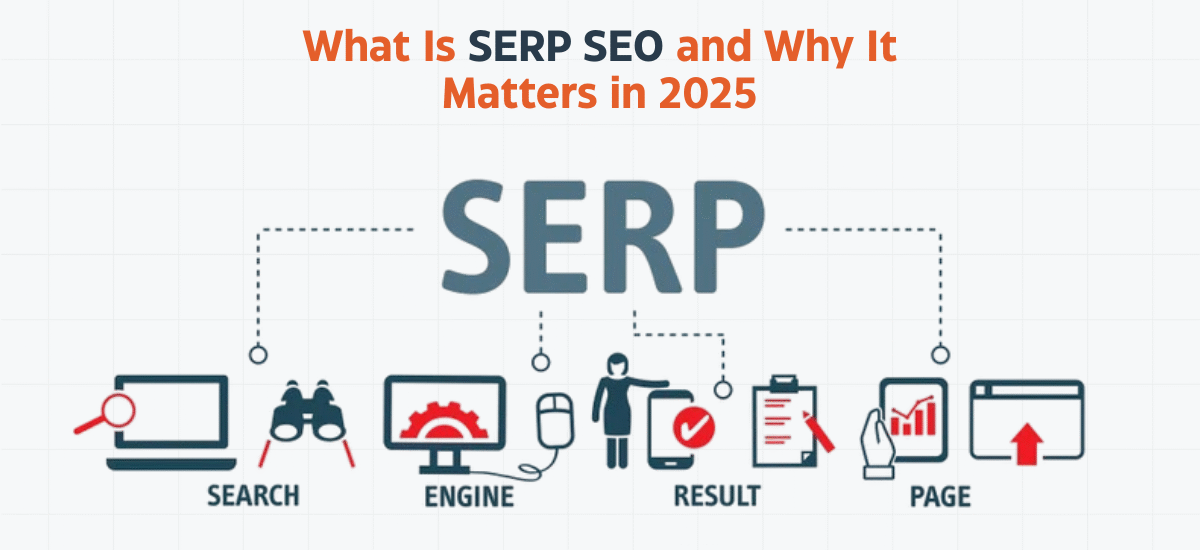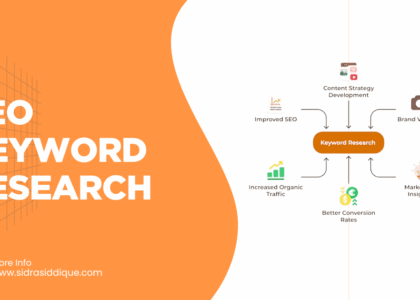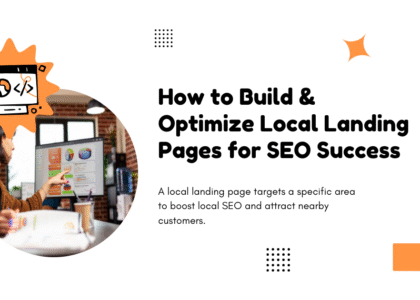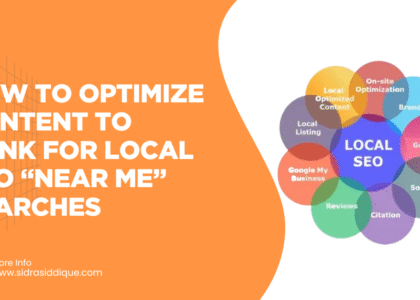In 2025, competition on search engine results pages is tougher than ever, and businesses in the U.S. cannot afford to ignore the power of SERP SEO. When people use Google Search, the way results are displayed decides who earns the most clicks, trust, and sales. Understanding how organic results and paid ads work together is critical for any digital growth strategy.
With more users relying on smartphones, local intent searches, and instant answers, ranking higher has become a direct path to more visibility, leads, and revenue. Mastering SERP SEO ensures your brand stands out in an increasingly crowded digital world.
This article will explain what SERP SEO is, why it matters for your online visibility, and how you can win the top spots in Google in 2025.
What is SERP in SEO?
A SERP is short for search engine results pages. Every time someone types a query into Google Search, the results they see make up the SERP. These results can include organic results, featured snippets, People Also Ask (PAA) boxes, Knowledge Graph & Knowledge Panels, and sometimes even paid ads.
For U.S. businesses, the SERP is the real marketplace. Customers decide who to trust by what they see first. The higher your position, the more clicks you earn, and the stronger your inbound marketing strategy becomes. That is why SERPs are the foundation of modern digital marketing.
What is a SERP Ranking?
A SERP ranking is the exact position of your website in Google Search for a specific keyword. If you are ranking first, you will usually capture the majority of organic click share. Studies show that the top five results take more than 65% of all clicks, while results on the second page get less than 1%.
The U.S. market is very competitive, and click-through rate (CTR) drops quickly as rankings fall. For example, the first result often has a CTR of 25–30%, while the tenth result may get only 2%. This means ranking higher can change your entire SEO strategy, from attracting quality traffic to lowering bounce rate.
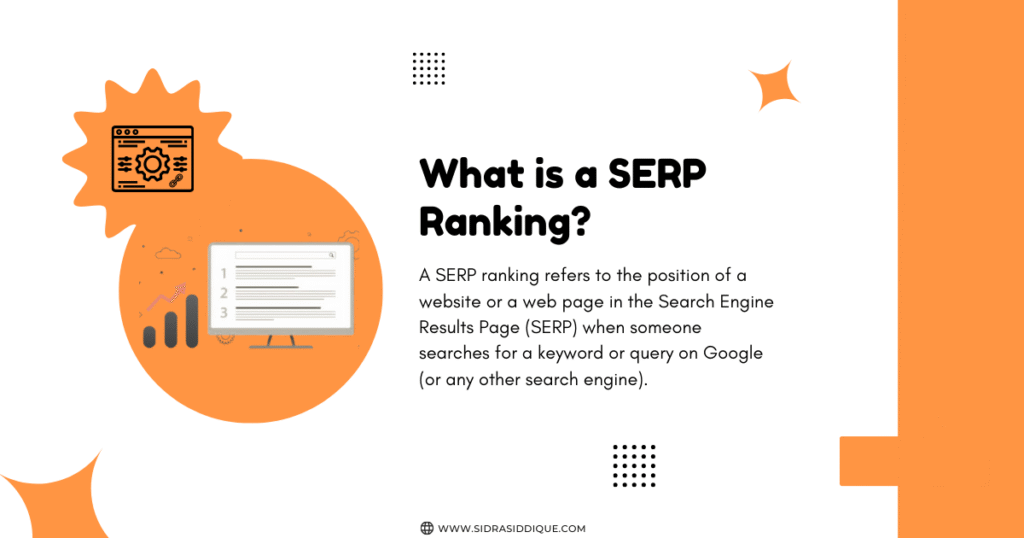
Why SERPs Are Crucial for Search Engine Optimization
SERPs are where competition happens. Every business wants to appear in featured snippets, rich answers / quick answers, or the Local 3-Pack for local searches. If your brand is not present, your competitors are getting those clicks.
The connection between SEO strategy and SERPs is direct. Your content optimization, technical SEO, and link building efforts only matter if they help you win more space on the SERP. A strong presence improves domain authority, builds trust, and makes your marketing funnels more effective.
Key Types of SERP Features
Different types of SERP features exist, and each plays a role in online visibility.
| SERP Feature | What It Means | Why It Matters |
| Organic results | Regular listings based on relevance & authority | Brings free and consistent quality traffic |
| Paid ads / PPC ads | Ads at the top or bottom | Good for quick traffic but high CPC (Cost per click) |
| Featured snippets | Rich boxes with direct answers | Increases trust and captures user signals |
| People Also Ask (PAA) | Extra questions related to query | Helps capture content freshness |
| Knowledge Graph & Panels | Info cards about people, brands, or places | Builds strong brand awareness |
| Local Packs | Map results from Google My Business | Drives calls and visits from local intent searches |
| Top Stories | News coverage on trending topics | Good for media visibility |
| Video & Image results | YouTube, images, or other rich media | Increases user experience (UX) |
| Google Shopping | Product listings | Key for eCommerce visibility |
| Social signals | Twitter or other mentions | Improves trust and reach |
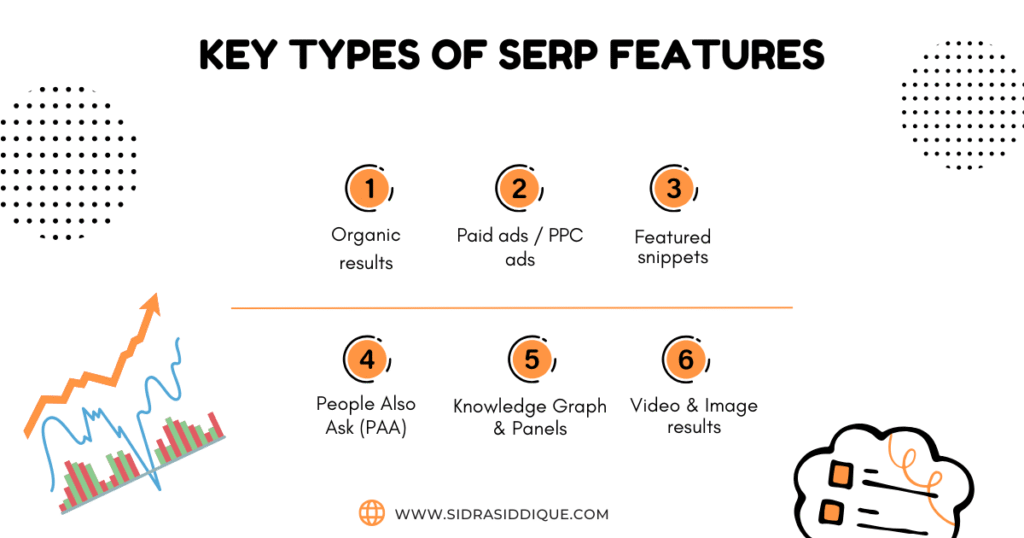
Click-Through Rate (CTR) and SERP Layouts
The click-through rate (CTR) depends heavily on the layout of the SERP. If a page has multiple featured snippets, PAA, and PPC ads, the share of organic click share for lower results goes down.
For U.S. businesses, knowing CTR distribution is important. According to 2024 data, the first organic result gets about 27% of clicks, while results below fifth drop under 5%. This shows why keyword research, content relevance, and competitor analysis are essential in any SEO strategy.
What is a SERP Checker and How Does It Work?
A SERP Checker is a tool that helps track your SERP ranking for chosen keywords. Tools like Ahrefs, SEMrush, and Moz allow you to monitor ranking difficulty, keyword & backlink monitoring, and track organic click share.
Every U.S. business should use a SERP Checker to see where they stand. Without tracking, you cannot improve your SEO visibility score or understand how Google algorithm updates affect your performance.
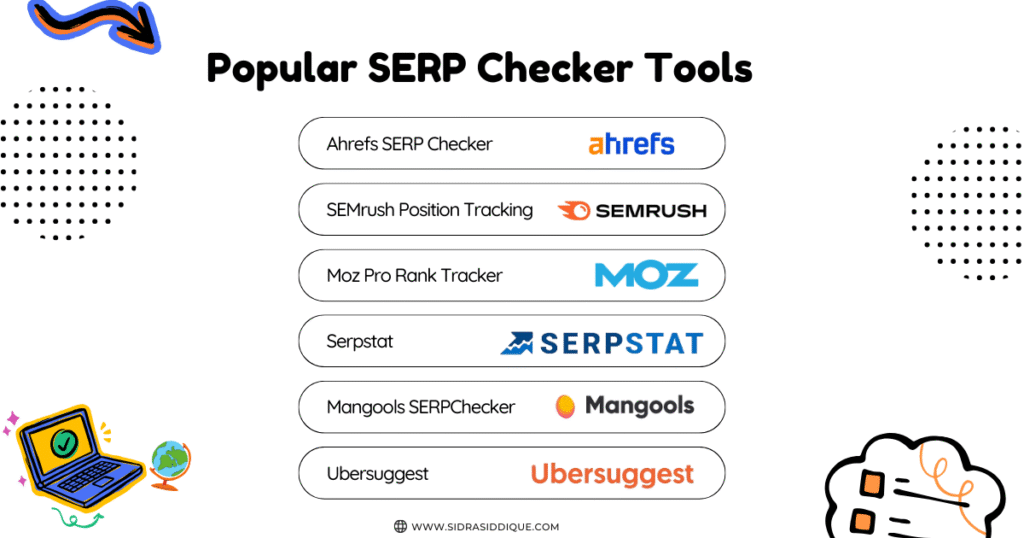
What is a SERP Analysis?
A SERP Analysis is a process where you study the top-ranking results for your keywords. It helps you understand search volume & keyword difficulty, the type of content that works, and the backlinks your competitors are building.
This kind of competitor analysis is valuable because it shows keyword gaps, content optimization opportunities, and new ways to improve domain authority. A good SERP Analysis can shape your entire inbound marketing strategy.
SERP Visibility & SEO Visibility Score Explained
Your SEO visibility score is a measure of how visible your website is across all search engine results pages. A higher score means you are showing up for more queries, earning more clicks, and improving online visibility.
U.S. businesses often compare visibility scores to understand their market position. A company with high SEO visibility is usually stronger in user signals, Core Web Vitals, and content relevance compared to weaker competitors.
The Benefits of SERP SEO for Businesses
Investing in SERP SEO means steady organic traffic growth. Unlike PPC ads, which stop when you stop paying, organic results continue to bring visitors and leads.
It is also cost-effective. A strong SEO strategy lowers CPC, builds domain authority, and ensures a better customer journey. For U.S. businesses, SERP SEO is often the best long-term digital investment.
Targeting Quality Traffic With SERP SEO
Not all traffic is equal. Ranking for quality traffic means targeting intent-driven queries, such as local intent searches or buyer-focused terms. These bring customers closer to conversions.
The difference between local and national targeting is clear. For example, a bakery in New York benefits from Google My Business and Local 3-Pack, while an online retailer may focus on national keywords with high search volume & keyword difficulty.
SERP SEO vs PPC Ads – Which Wins More Clicks?
The fight between SERP SEO and PPC ads comes down to cost and trust. While PPC ads appear at the top, many users skip them and click organic results because they trust them more.
Research shows that organic click share is still higher than paid. PPC can be useful for seasonal campaigns or new launches, but SEO strategy wins long-term because it delivers ongoing quality traffic without high CPC costs.
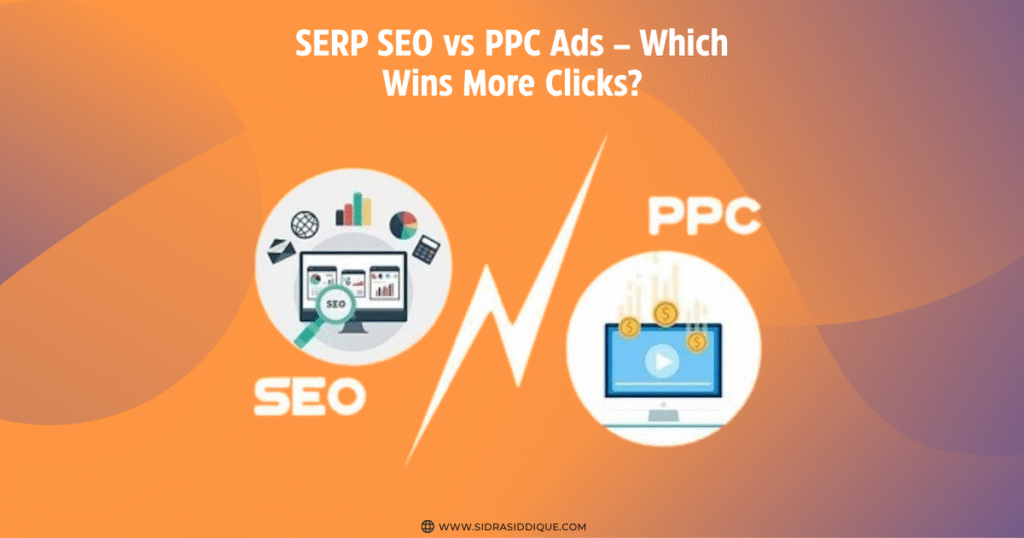
How SERP SEO Improves Brand Awareness & PR
Appearing in featured snippets, Knowledge Graph & Knowledge Panels, or rich answers builds trust and authority. When users see your brand in multiple SERP features, they recognize you as a leader in your space.
Case studies prove this. A U.S. law firm improved leads by 40% after optimizing for featured snippets and People Also Ask (PAA). Their strong content optimization also lowered bounce rate, proving how SERPs boost both traffic and conversions.
On-SERP SEO: Optimizing for What Shows Directly in Google
In 2025, on-SERP SEO is more important than ever. Users often find answers without leaving Google Search, so you must optimize for elements like featured snippets, rich answers, and PAA.
This does not mean losing traffic. Instead, it builds online visibility and brand trust. If users see your business repeatedly on the SERP, they are more likely to click when they are ready to buy.
Actionable Strategies to Win SERPs in 2025
Winning the SERP in 2025 means focusing on content freshness, schema markup, and mobile-first indexing. Businesses must also improve Core Web Vitals for better user experience (UX) and lower bounce rate.
Building authority through backlinks, publishing videos for mobile searches, and using Google My Business for local visibility are also key. Combining technical SEO, content relevance, and social signals creates a strong SEO strategy.
SERP SEO Tools You Should Be Using
Strong tools help track and improve performance. Diib SEO Tool, Ahrefs, SEMrush, Moz, and Google Search Console are popular in the U.S. Each supports keyword research, ranking difficulty, and indexing monitoring.
For local searches, BrightLocal and Vendasta help track Local 3-Pack rankings. For agencies, platforms like Acquisio give deeper insights into CPC and campaign performance. Choosing the right tool depends on your inbound vs outbound marketing strategy.
Comparing Popular SERP SEO Platforms
Several platforms now focus directly on SERP SEO. Tools like Serpempire, Serpseo, and SERPWoo are designed for deeper keyword & backlink monitoring.
Each has its own pricing and features. Some focus on local intent searches, while others help with content optimization. The right choice depends on whether you are targeting mobile searches, national reach, or competitor analysis.
Best Practices for Continuous SERP Monitoring
Continuous SERP monitoring is the only way to stay ahead of Google algorithm updates like RankBrain, Panda, Penguin, and Mobile update. Regular checks help you adapt your SEO strategy.
U.S. businesses should set a schedule for SERP Checker reports. Tracking user signals, domain authority, and search engine algorithm shifts ensures you are never left behind.
Common Mistakes to Avoid in SERP SEO
One common mistake is ignoring SERP features. Many businesses only chase rankings but forget about featured snippets, PAA, or local intent searches.
Another mistake is over-reliance on PPC ads without building organic results. Also, ignoring mobile-first indexing or poor Core Web Vitals leads to high bounce rate and weaker user experience (UX).
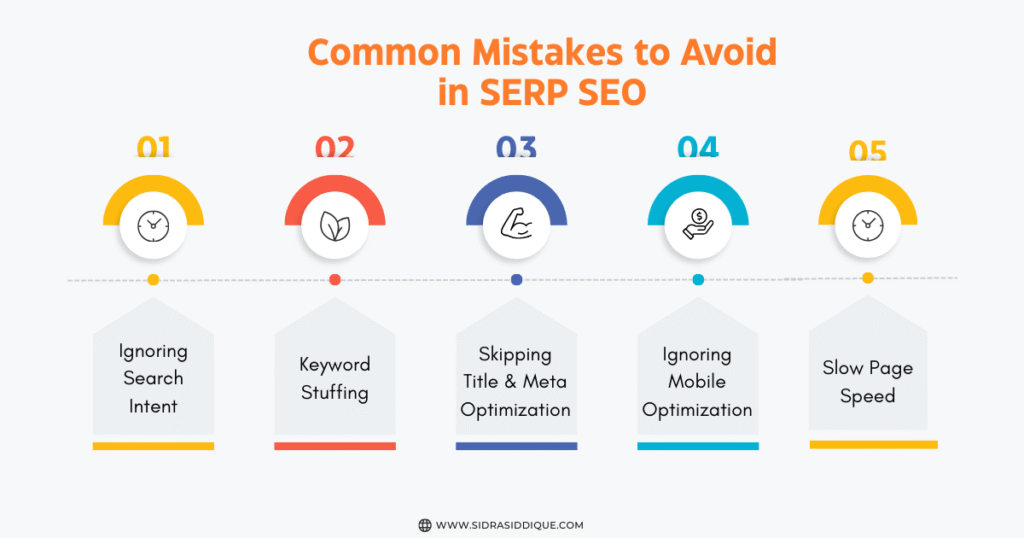
Final Thoughts: Reaching Your SERP Goals With SEO
In 2025, SERP SEO is not an option, it is a necessity. From organic results to featured snippets, every element of the SERP impacts your brand’s trust, traffic, and conversions.
The best approach is clear: invest in content optimization, backlinks, and technical SEO, while using tools like Diib, Ahrefs, and Google Search Console for tracking. If you make SERPs the heart of your SEO strategy, your business will stay visible, trusted, and competitive in the U.S. market.
FAQs About SERPs and SEO
SERPs means Search Engine Results Pages, which are the pages shown by Google or other search engines after a query.
What are SERPs in SEO?
In SEO, SERPs are where your website appears among organic results, paid ads, and rich features like featured snippets.
What is SERP vs SEO?
SERP is the results page itself, while SEO is the process of optimizing your website to rank higher on that page.
What information will come out from SERPs?
SERPs display web listings, featured snippets, images, videos, local 3-pack, shopping results, and knowledge panels.
Is SERP worth it?
Yes, ranking on SERPs is worth it because higher positions bring more visibility, clicks, leads, and long-term organic traffic.
Who are SERP competitors?
SERP competitors are other websites targeting the same keywords, appearing alongside you in Google Search results.

